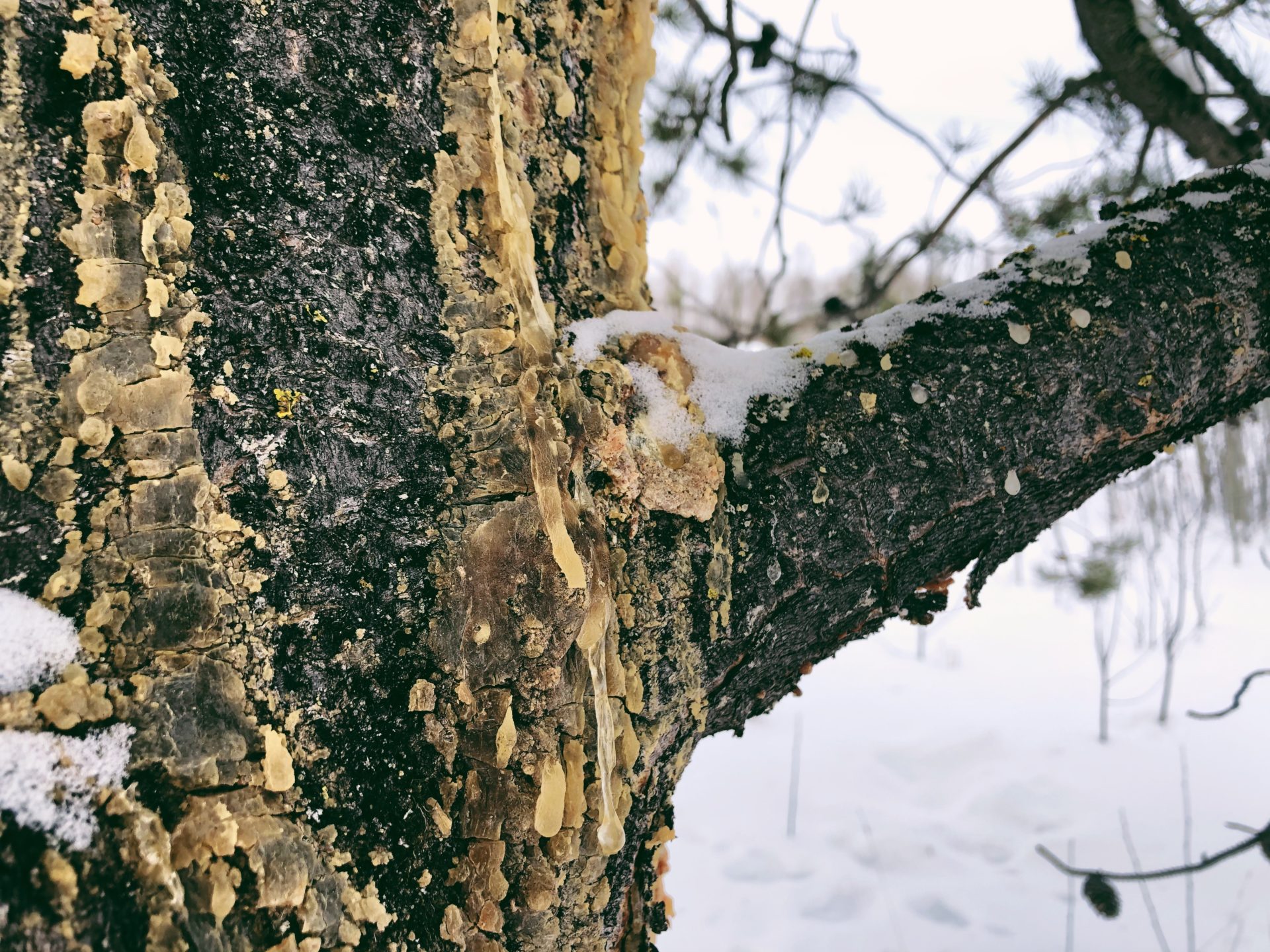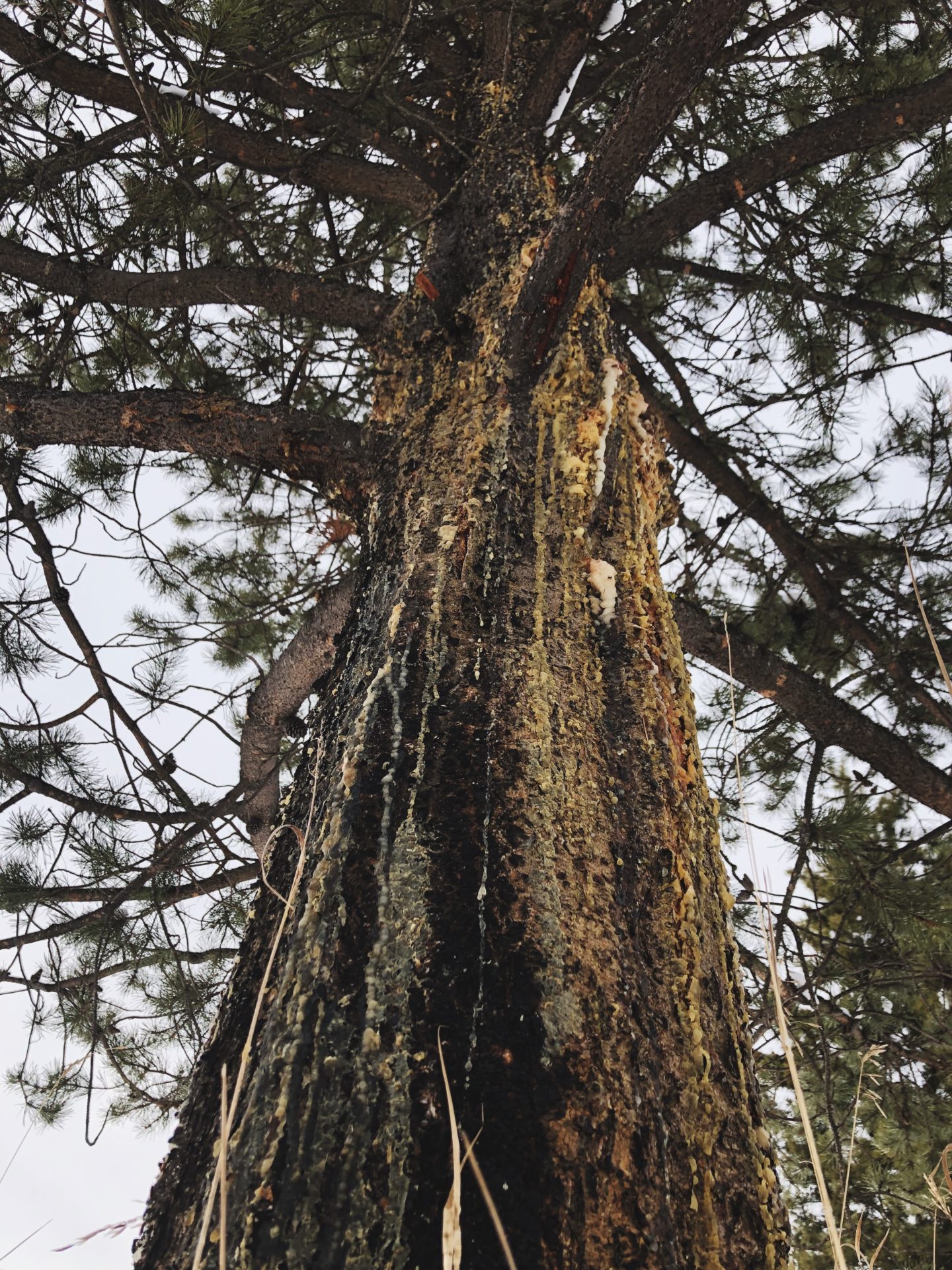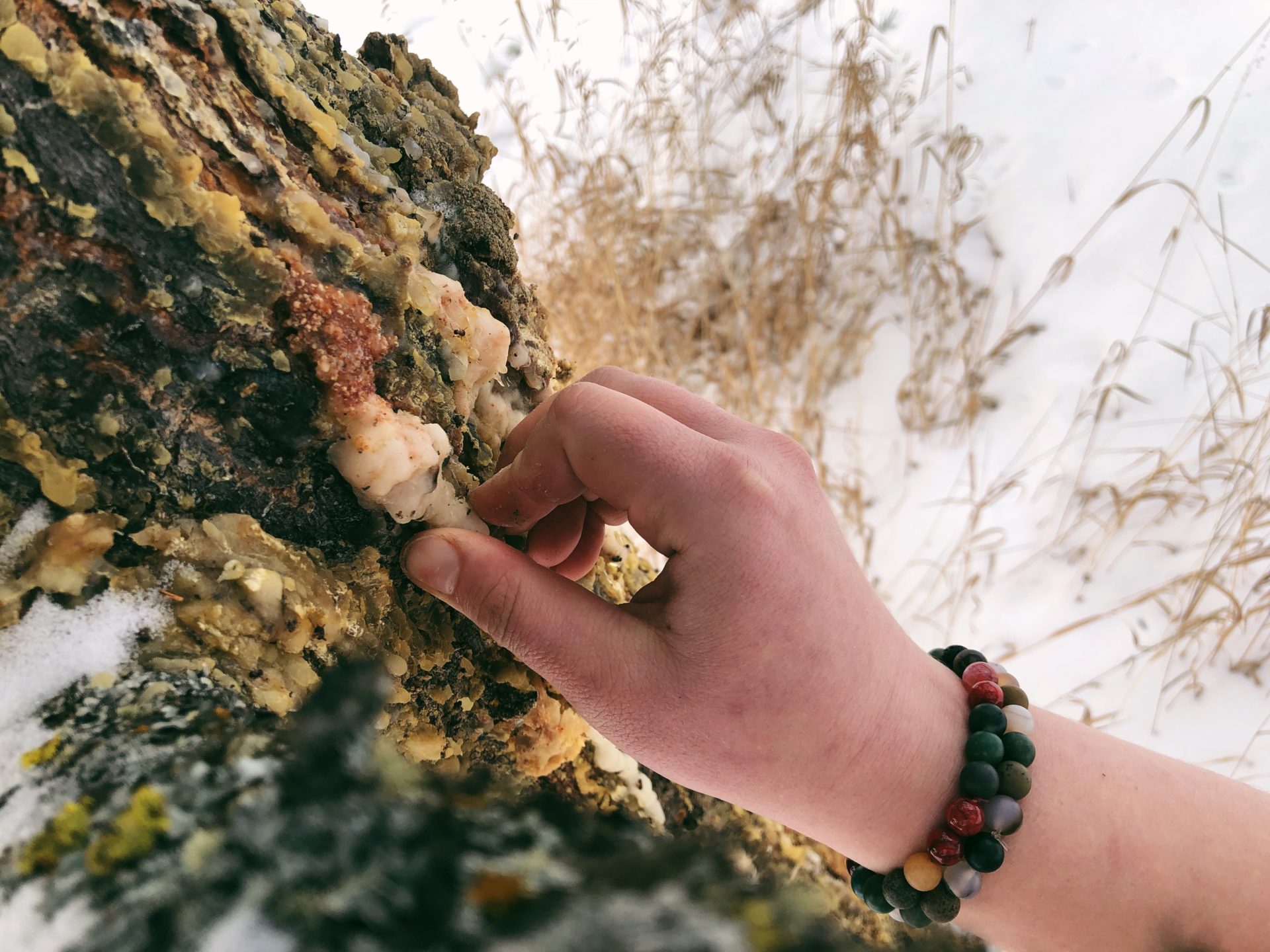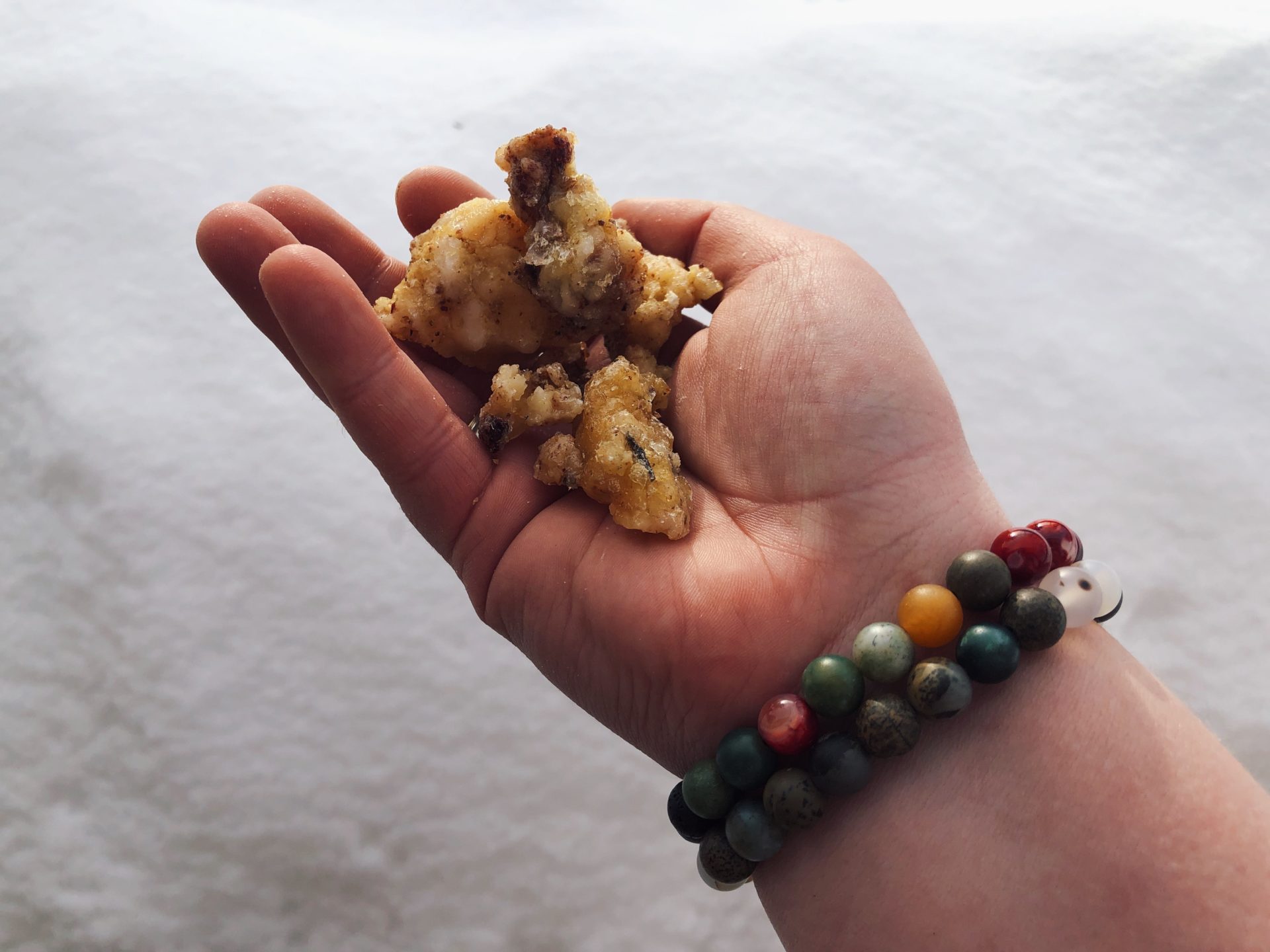Let’s take a moment to set the scene. It’s late February, the last of the deep winter freezes are behind us, daylight hours are getting increasingly longer and a hint of spring lingers in the air. You start to get the itch to spend more time outside, as it has been far too long since you went out foraging in the woods behind your house, or in the forests a short drive from home. Spring is near – but not quite, if you live in the northern reaches of British Columbia, where a thick layer of snow still firmly blankets the Earth and will continue to do so for another couple months. But don’t let that keep you cooped up in the house; strap on the snowshoes and search for the nearest pine stand to do some later winter foraging.
Advertisement

Despite being ravaged by the mountain pine beetle in the 1990s/early 2000s, and ensuing wildfires in the decades thereafter, there are many beautiful lodgepole pine (Pinus contorta) stands scattered around the province. These slender conifers can reach heights of over 75 feet tall and grow throughout the boreal forest. They can be identified by their stiff, one to two-inch-long needles that grow two to a bundle, with bundles being relatively parallel to one another. Seed cones grow at a right angle to the branch.

Even in the winter, almost all of a lodgepole pine can be utilized. The needles can be infused into witch hazel or an oil of your choice to create liniments and salves to soothe sore muscles, or use the needles to make a tea that is high in vitamin C. The cambium layer of the bark (the white, inner layer) was a food source throughout history, and is still utilized as a survival food to this very day. Harvesting the cambium from branches does the least amount of harm to the tree; whatever you do, do not girdle the trunk of the tree. Girdling the tree (removing bark from all the way around the trunk) will cause the tree to slowly die.
Advertisement

Pine resin (the solid form of pitch, although the terms often get used interchangeably) can also be harvested during the winter. During the winter, the sap isn’t running like it would in the spring, so you will have to look along the trunks of the trees to find an old wound that has been covered with resin. Sometimes you will be able to remove little chunks of resin by hand, other times you may need to use a tool – whatever method you use, beware that it can be a sticky endeavour. Removing only a small amount from areas such as these allows you to sustainably harvest the pine resin, without causing damage to the tree. The resin can be infused into salves that aid the healing of a variety of skin issues.

As always, practice sustainable harvesting methods while out in the forest. There are many different species of pine, and not all of them are edible, so care must be taken to positively identify the tree before ingesting anything you have harvested.
Advertisement